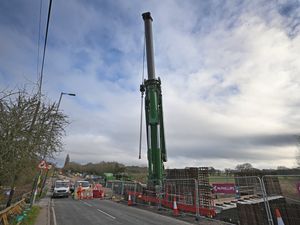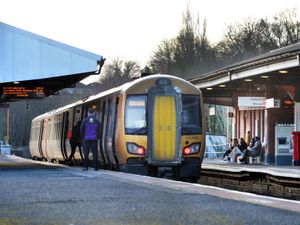Logistics firm raises concerns over smart motorways
The boss of a logistics business has raised concerns over the safety of the UK’s smart motorways.

Many drivers at Kingswinford-based JJX Logistics have raised concerns with management over smart motorways on safety grounds.
One driver had a recent ‘near miss’ which managing director John Donovan said was causing him sleepless nights.
The Department for Transport says smart motorways are as safe as, or safer than, conventional ones.
Mr Donovan says drivers using the sections that are deemed ‘smart’ know there is little margin for error with the removal of hard shoulders.
Smart motorways have been criticised because they do not have a hard shoulder and drivers who break down can be trapped in the speeding traffic.
The ‘near miss’ for JJX, of Pensnett Trading Estate, was on May 13 on a section of Cheshire’s M6, that is a designated smart motorway.
Part of the M6 was closed following a collision involving two vehicles between J17 Sandbach and J16 Stoke-on-Trent and there was congestion for four miles due to the accident.
Mr Donovan said that the JJX driver was carrying dangerous goods under ADR (European Agreement Concerning the International Carriage of Dangerous Goods by Road) regulations, which could have resulted in a far more serious incident than if she were carrying ambient/non-hazardous goods.
The driver broke down and had no power to get the vehicle to safely to services and pulled over in the van as far as physically possible on this smart motorway with hazard lights flashing.
She was stuck, partially in a live lane and moments after safely exiting the vehicle and positioning herself out of harms way, an articulated lorry ploughed into the JJX vehicle pushing it up the embankment and ripping the back half of the van clean off, including the goods on board.
No one was hurt and the chemicals on board remained contained within their packaging.
The AA has campaigned for improving the design and safety of smart motorways, but in March the AA's president Edmund King, welcomed measures announced by the Transport Secretary as a victory for common sense and safety.
There was a commitment to double the number of emergency refuge areas and change their spacing from 1.5 miles to three quarters of a mile where feasible.
The AA is committed to ensuring smart motorways work for drivers and that drivers understand how to use them.
Mr King says that with Stopped Vehicle Detection, more resources to monitor the motorways and a high-profile information campaign this should help make smart motorways safer.
Highways England says that all smart motorways already include a system called MIDAS (Motorway Incident Detection and Automatic Signalling).
This uses sensors to monitor traffic volumes and automatically set signs and signals as the motorway becomes more congested, says Highways England.
Highways England say safety systems also include red X signs, CCTV, enforcement cameras and roadside telephones in emergency areas, that are built into smart motorways as standard.
It says that emergency areas are a safer place to stop in the event of a breakdown than a live lane or a hard shoulder and have been specifically designed to be located at regular intervals and to increase the distance between the stopped vehicle and moving traffic.
On May 29, this article was updated to correct information regarding a statement from the AA on smart motorways on March 12, 2020.





